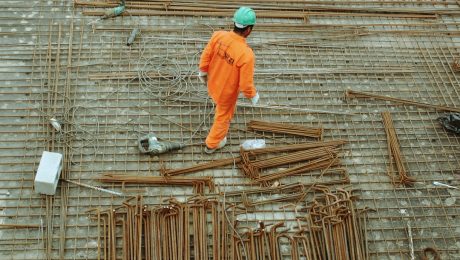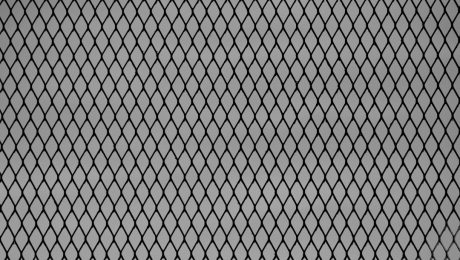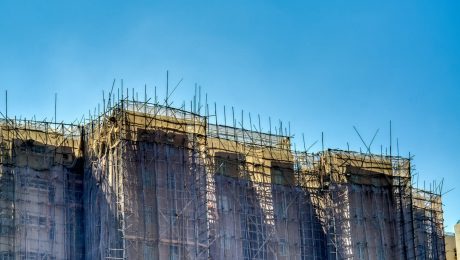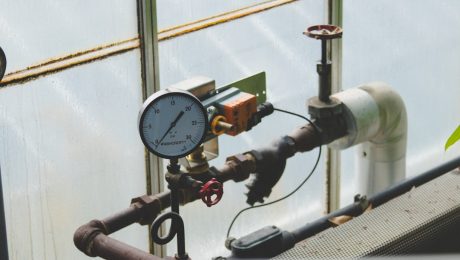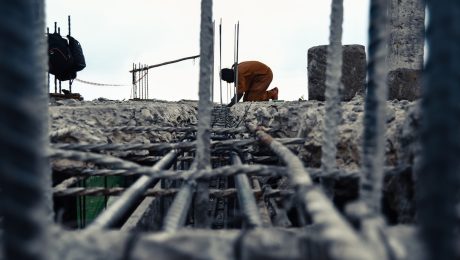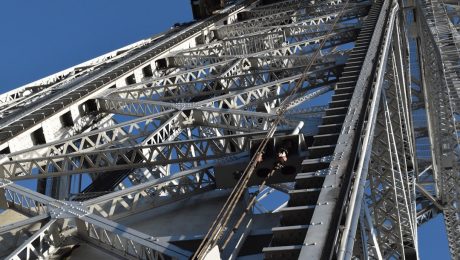In today’s technologically driven world, technical guides and manuals are no longer optional extras; they are essential components of successful product launches and efficient user experiences. Whether you’re a seasoned engineer, a budding entrepreneur, or simply a tech-savvy individual, understanding the nuances of these documents is paramount. This comprehensive guide will delve into the creation, utilization, and importance of technical guides and manuals across various industries.
The Crucial Role of Technical Documentation in Product Success
Technical documentation plays a pivotal role in a product’s lifecycle, extending far beyond simply explaining how to use it. Well-written manuals improve user satisfaction, reduce support calls, and ultimately boost sales. Clear and concise instructions minimize frustration, leading to quicker adoption and positive reviews. Conversely, poorly written or incomplete documentation can lead to user confusion, product returns, and damage to a company’s reputation. Effective documentation acts as a bridge between the product developers and the end-users, ensuring a smooth and successful user experience.
Consider the impact on safety-critical industries like aviation or medicine. Ambiguous instructions in a medical device manual could have life-threatening consequences. The clarity and accuracy of technical documentation are not just about user convenience; in many cases, they are crucial for safety and compliance with industry regulations.
Types of Technical Guides and Manuals: A Diverse Landscape
The world of technical documentation is incredibly diverse. The type of manual required depends heavily on the product or service being documented. Some common types include:
- User Manuals: These provide step-by-step instructions on how to use a product, often including troubleshooting tips and safety precautions.
- Installation Guides: These focus specifically on the process of setting up and configuring a product, often with diagrams and illustrations.
- Troubleshooting Guides: These address common problems users might encounter, providing solutions and workarounds.
- Maintenance Manuals: These guide users on how to perform routine maintenance tasks to ensure the product’s longevity.
- API Documentation: Crucial for software developers, these manuals explain how to interact with a software application’s programming interface.
- Technical Specifications: These provide detailed technical information about a product’s features and capabilities.
Understanding the specific needs of your target audience is key to choosing the appropriate type of documentation and tailoring its content accordingly.
Effective Strategies for Creating Compelling Technical Manuals
Creating effective technical manuals requires a strategic approach. Consider these key elements:
- Know Your Audience: Tailor the language, complexity, and level of detail to your target audience’s technical expertise.
- Clear and Concise Language: Avoid jargon and technical terms whenever possible. Use simple, direct language that is easy to understand.
- Logical Structure and Flow: Organize the information logically, using headings, subheadings, and bullet points to improve readability.
- Visual Aids: Incorporate diagrams, illustrations, screenshots, and videos to enhance understanding and engagement.
- Consistent Formatting and Style: Maintain a consistent style throughout the manual to improve readability and professionalism.
- Thorough Testing and Review: Before publishing, test the manual thoroughly and have it reviewed by subject matter experts and potential users.
Utilizing technical writing tools and software can streamline the creation process and ensure consistency.
Maintaining and Updating Technical Documentation: A Continuous Process
Technical documentation is not a static document; it requires ongoing maintenance and updates. As products evolve and new features are added, the documentation must be updated to reflect these changes. Regular updates ensure that users have access to the most current and accurate information. Failure to update documentation can lead to confusion, frustration, and potential safety hazards.
Implementing a version control system is essential for managing revisions and ensuring that all stakeholders have access to the latest version. A well-defined update process, including regular reviews and feedback mechanisms, is crucial for maintaining the accuracy and relevance of the documentation.
Utilizing Technical Guides and Manuals: Maximizing Their Value
Effective utilization of technical guides and manuals is crucial for both users and organizations. For users, carefully reading and understanding the documentation can prevent problems, optimize product usage, and improve overall satisfaction. For organizations, readily available and easily searchable manuals reduce support costs, minimize downtime, and enhance customer loyalty.
Companies should prioritize making their technical documentation easily accessible through various channels, including online portals, downloadable PDFs, and integrated help systems. Investing in a robust knowledge base system allows users to quickly find answers to their questions and resolve issues independently. This empowers users and reduces the burden on support teams.
In conclusion, technical guides and manuals are far more than just instruction booklets; they are critical assets that contribute significantly to product success, user satisfaction, and overall business efficiency. By understanding their importance, mastering their creation, and effectively utilizing them, organizations can unlock their full potential and build stronger relationships with their customers.
SEO Tags:
technical guides, manuals, documentation, technical writing, user manuals
body {
font-family: sans-serif;
line-height: 1.6;
}
h1, h2, h3 {
color: #333;
}
Scaffolding is an indispensable element in construction, providing temporary access to heights for workers and materials. At the heart of most scaffolding systems lie scaffolding pipes – strong, versatile, and crucial for ensuring worker safety and project success. This comprehensive guide delves into the world of scaffolding pipes, exploring their types, applications, safety considerations, erection procedures, and relevant regulations.
Types of Scaffolding Pipes Used in Construction
Scaffolding pipes are typically made from high-strength steel, designed to withstand significant loads and environmental conditions. Several types are commonly used, each with its own strengths and weaknesses:
- Standard Scaffolding Pipes: These are the most common type, usually black, galvanized, or powder-coated for corrosion resistance. They come in various diameters and lengths, conforming to specific industry standards. The diameter is crucial for load-bearing capacity. Larger diameter pipes are stronger and suitable for heavier loads.
- Couplers: These are essential components that connect scaffolding pipes together, allowing for the creation of complex scaffold structures. Couplers come in various types, including swivel couplers, right-angle couplers, and adjustable couplers, each designed for specific connections and adjustments.
- Alloy Steel Pipes: For projects requiring increased strength and durability, especially in harsh environments or with heavy loads, alloy steel scaffolding pipes are employed. These pipes offer superior resistance to corrosion and wear, extending their lifespan.
- Aluminum Scaffolding Pipes: Lighter than steel, aluminum scaffolding pipes are used where weight is a significant factor, such as in renovations or work on delicate structures. However, they possess lower load-bearing capacity compared to steel pipes.
Safe Erection and Dismantling of Scaffolding Pipes
The safe erection and dismantling of scaffolding is paramount. Improper procedures can lead to serious accidents. Key considerations include:
- Proper Planning: Thorough planning, including detailed drawings and risk assessments, is essential before any scaffolding erection commences. This ensures that the scaffold is adequately designed for the specific task and load requirements.
- Qualified Personnel: Only trained and experienced personnel should erect and dismantle scaffolding. They should be familiar with all safety regulations and procedures.
- Base Stability: The base of the scaffold must be stable and level, ensuring that the entire structure is secure and won’t collapse. Using base plates and ensuring proper ground conditions are crucial.
- Tie-in Points: Scaffolding structures, especially taller ones, need to be secured to the building or structure using appropriate tie-in points to prevent sway and collapse. The frequency and strength of tie-ins depend on the height and load.
- Regular Inspections: Regular inspections throughout the construction process are vital to identify any potential hazards or damage to the scaffolding. This helps prevent accidents and ensures worker safety.
Common Applications of Scaffolding Pipes in Construction
Scaffolding pipes find extensive use across various construction applications:
- Building Construction: Providing access for workers to all levels of a building during construction, from foundations to roofing.
- Bridge Construction: Supporting workers and materials during the construction and maintenance of bridges.
- Industrial Projects: Used in industrial settings for maintenance, repairs, and construction work on large-scale structures such as tanks, chimneys, and power plants.
- Renovations and Repairs: Providing access for workers during renovations and repairs of existing buildings.
- Event Staging: Creating temporary staging for events, concerts, and other outdoor activities.
Safety Regulations and Standards for Scaffolding Pipes
Strict adherence to safety regulations and standards is crucial when working with scaffolding pipes. These regulations vary depending on location, but common elements include:
- Regular Inspections: Frequent inspections by competent personnel are mandatory to identify and rectify any potential hazards.
- Proper Training: Workers must receive adequate training on the safe erection, use, and dismantling of scaffolding.
- Protective Equipment: Appropriate personal protective equipment (PPE), such as hard hats, safety harnesses, and safety boots, must be worn at all times.
- Load Capacity: The scaffolding must be designed and erected to support the intended load without exceeding its capacity.
- Compliance with Codes: All scaffolding must comply with relevant national and local building codes and standards.
Maintaining and Extending the Lifespan of Scaffolding Pipes
Proper maintenance can significantly extend the lifespan of scaffolding pipes and ensure their continued safe use:
- Regular Cleaning: Regularly cleaning the pipes removes dirt, debris, and corrosive substances, preventing premature deterioration.
- Corrosion Protection: Applying protective coatings, such as paint or galvanizing, helps prevent corrosion and extends the life of the pipes, especially in harsh environments.
- Damage Inspection: Regularly inspect the pipes for any signs of damage, such as dents, cracks, or bends. Damaged pipes should be replaced immediately.
- Proper Storage: When not in use, scaffolding pipes should be stored properly to prevent damage and corrosion. This includes keeping them dry and protected from the elements.
- Record Keeping: Maintaining detailed records of inspections, repairs, and replacements helps track the condition of the scaffolding and ensures compliance with safety regulations.
In conclusion, scaffolding pipes are fundamental to safe and efficient construction. Understanding their types, applications, safety regulations, and proper maintenance practices is vital for ensuring worker safety and project success. By adhering to best practices and prioritizing safety, construction professionals can leverage the strength and versatility of scaffolding pipes to reach new heights.
Tags: scaffolding pipes, construction safety, scaffolding erection, scaffolding regulations, scaffolding materials
body {
font-family: sans-serif;
line-height: 1.6;
margin: 20px;
}
h1, h2, h3 {
color: #333;
}
img {
max-width: 100%;
height: auto;
display: block;
margin: 20px auto;
}
Cold drawn hexagonal bars are a versatile and widely used type of steel bar, prized for their superior strength, accuracy, and surface finish. This comprehensive guide delves into the intricacies of these bars, exploring their manufacturing process, properties, applications, advantages, and specifications. Understanding these aspects is crucial for engineers, designers, and procurement professionals seeking high-performance materials for their projects.
The Cold Drawing Process: Shaping Precision
Unlike hot-rolled bars, cold drawn hexagonal bars undergo a process of deformation at room temperature. This process begins with a hot-rolled round bar, which is then subjected to a series of controlled reductions in diameter and shape using dies. The dies are precisely engineered to create the characteristic hexagonal cross-section. The cold drawing process significantly improves the mechanical properties of the steel, resulting in increased strength, ductility, and a finer grain structure. The precise control over the process allows for tight tolerances and superior surface finishes, minimizing the need for further machining.
The process typically involves several stages of drawing, with intermediate annealing steps to relieve stress and prevent work hardening. Lubrication is crucial throughout the process to reduce friction and ensure smooth drawing without damage to the bar. The final product is a highly accurate and dimensionally consistent hexagonal bar ready for use in a wide range of applications.
Mechanical Properties and Material Grades: Strength and Durability
Cold drawn hexagonal bars are available in various grades of steel, each offering a unique combination of strength, ductility, and hardness. Commonly used grades include low carbon steel, medium carbon steel, and alloy steels. The specific mechanical properties, such as tensile strength, yield strength, and elongation, are heavily influenced by the steel grade and the cold drawing process parameters. Higher carbon content generally leads to increased strength and hardness but can reduce ductility. Alloying elements further enhance specific properties, such as corrosion resistance or high-temperature strength.
Detailed specifications, including chemical composition and mechanical properties, are typically provided by manufacturers according to industry standards like ASTM (American Society for Testing and Materials) or other relevant international standards. These specifications are essential for selecting the appropriate grade of cold drawn hexagonal bar for a specific application.
Applications: Versatility Across Industries
The combination of high strength, precision, and good surface finish makes cold drawn hexagonal bars ideal for a vast array of applications across various industries. They are frequently used in:
- Automotive: Components such as axles, shafts, and connecting rods.
- Construction: Reinforcement bars and structural elements.
- Machinery: Shafts, spindles, and other precision components.
- Aerospace: High-strength components requiring tight tolerances.
- Manufacturing: Jigs, fixtures, and tooling.
The specific application will dictate the required steel grade, dimensions, and surface finish. Careful consideration of these factors is essential to ensure optimal performance and longevity of the final product.
Advantages of Cold Drawn Hexagonal Bars: Why Choose Them?
Several advantages contribute to the widespread use of cold drawn hexagonal bars:
- High Strength and Hardness: The cold drawing process significantly improves the mechanical properties of the steel, resulting in superior strength and hardness compared to hot-rolled bars.
- Excellent Surface Finish: The process produces a smooth and accurate surface, minimizing the need for further machining and reducing manufacturing costs.
- Tight Tolerances: Cold drawing allows for precise control over dimensions, ensuring consistency and accuracy.
- Improved Machinability: The finer grain structure resulting from cold drawing can enhance machinability in certain applications.
- Cost-Effectiveness: While the initial cost may be slightly higher than hot-rolled bars, the improved properties and reduced machining requirements often result in overall cost savings.
Specifications and Standards: Ensuring Quality and Consistency
Manufacturers adhere to strict standards and specifications to ensure the quality and consistency of cold drawn hexagonal bars. These specifications cover various aspects, including:
- Material Grade: Specifies the chemical composition and mechanical properties of the steel.
- Dimensions: Defines the precise dimensions of the hexagonal bar, including length and cross-sectional size.
- Tolerances: Specifies the allowable variations from the nominal dimensions.
- Surface Finish: Describes the quality of the surface finish, often specified using roughness parameters.
- Testing and Inspection: Outlines the methods used to ensure the quality and conformity of the bars to the specified standards.
Understanding these specifications is critical for selecting the appropriate bars for a given application and ensuring that the material meets the required performance criteria.
Choosing the right cold drawn hexagonal bar requires careful consideration of the application’s demands. By understanding the manufacturing process, mechanical properties, and available specifications, you can select the optimal material to ensure the success of your project.
Tags: Cold drawn hexagonal bars, hexagonal steel bars, cold drawn steel, steel bar specifications, steel bar applications
The choice between concrete and steel is a fundamental decision in any construction project. Both materials offer unique properties, strengths, and weaknesses, making the selection process crucial for ensuring structural integrity, cost-effectiveness, and project success. This in-depth comparison will delve into the key differences between these two titans of the construction world, helping you understand which material best suits your needs.
Strength and Structural Capacity: A Head-to-Head Comparison
Concrete excels in compressive strength, meaning it can withstand significant crushing forces. This makes it ideal for columns, foundations, and other load-bearing elements where pressure is the primary concern. However, concrete’s tensile strength (resistance to pulling forces) is significantly lower. Steel, on the other hand, boasts exceptional tensile strength, along with high compressive strength. This makes it perfect for beams, girders, and other structural components subjected to tension and bending. Often, the two materials are used together – concrete’s compressive strength combined with steel’s tensile strength creates reinforced concrete, a highly versatile and robust construction material. This synergistic approach allows for the creation of structures capable of withstanding immense loads and stresses.
Durability and Longevity: Weathering the Storm
Concrete’s durability is largely dependent on the quality of the mix and proper curing. When properly mixed and maintained, concrete can last for decades, even centuries, showing remarkable resistance to fire and weathering. However, it’s susceptible to cracking, especially under extreme temperature fluctuations or when subjected to aggressive chemicals. Steel, while incredibly strong, is vulnerable to corrosion, particularly in environments with high humidity or salinity. Protective coatings, such as galvanization or paint, are often necessary to extend the lifespan of steel structures. The longevity of both materials also depends on proper maintenance and regular inspections to address any potential issues early on.
Cost Analysis: Balancing Budget and Performance
The cost of concrete and steel can vary significantly depending on factors such as location, availability, and market conditions. Generally, concrete is often considered a more cost-effective option for large-scale projects, particularly foundations and massive structures. However, the cost of forming and finishing concrete can add up. Steel, while potentially more expensive per unit weight, often requires less material overall for certain applications, leading to potential cost savings in labor and transportation. Furthermore, the ease of fabrication and assembly of steel structures can contribute to faster construction times and reduced labor costs. A detailed cost analysis, considering material costs, labor, and project timelines, is essential for making an informed decision.
Sustainability and Environmental Impact: A Green Construction Perspective
Both concrete and steel production have significant environmental impacts. Concrete production is a major contributor to carbon emissions due to the high energy consumption involved in cement manufacturing. However, advancements in sustainable concrete mixes, such as the use of supplementary cementitious materials and lower-carbon cement, are reducing its environmental footprint. Steel production also contributes to greenhouse gas emissions, primarily from the smelting process. Recycling steel is significantly more efficient than recycling concrete, making it a more sustainable option in terms of material reuse. Ultimately, the environmental impact of choosing either material depends on factors such as the sourcing of materials, transportation distances, and the overall lifecycle of the structure.
Applications and Suitability: Choosing the Right Material for the Job
The ideal choice between concrete and steel often depends on the specific application and project requirements. Concrete is frequently used in large-scale projects like dams, bridges, high-rise buildings (often in combination with steel), and retaining walls. Its ability to withstand compression and its inherent fire resistance make it suitable for structures requiring high load-bearing capacity and fire safety. Steel is commonly used in skyscrapers, long-span bridges, and industrial structures where its high tensile strength and flexibility are crucial. Its lightweight nature makes it easier to transport and assemble, leading to faster construction times. In many modern constructions, a hybrid approach utilizing both materials offers the best of both worlds, maximizing structural efficiency and minimizing costs.
In conclusion, the decision to use concrete or steel in construction is not a simple one. A thorough understanding of each material’s strengths, weaknesses, costs, and environmental impact is crucial. Often, the most effective approach involves a careful consideration of the specific project requirements and a potentially hybrid approach leveraging the best qualities of both materials. Consulting with experienced structural engineers is highly recommended to ensure the optimal material selection for any construction project.
SEO Tags:
- Concrete vs Steel
- Construction Materials
- Structural Engineering
- Building Materials Comparison
- Concrete and Steel Applications
In today’s dynamic business landscape, stagnation is a death sentence. Organizations that want to thrive must embrace a culture of continuous improvement. This isn’t just about incremental tweaks; it’s a fundamental shift in mindset, a commitment to constant learning, adaptation, and optimization. This post will explore the key elements of building a thriving continuous improvement culture, focusing on the principles of Kaizen – the Japanese philosophy of continuous improvement.
1. Laying the Foundation: Defining Your Improvement Goals
Before embarking on a continuous improvement journey, it’s crucial to define clear and measurable goals. What specific areas need improvement? Are you aiming to reduce production costs, enhance customer satisfaction, improve employee morale, or streamline processes? Setting SMART (Specific, Measurable, Achievable, Relevant, Time-bound) goals provides a roadmap for your efforts. For example, instead of vaguely aiming to “improve customer service,” a SMART goal might be: “Increase customer satisfaction scores by 15% within the next six months by implementing a new customer feedback system and providing additional employee training.” This clarity ensures everyone is working towards the same objectives and allows for effective tracking of progress.
2. Fostering a Culture of Open Communication and Feedback
A continuous improvement culture thrives on open communication and a willingness to embrace feedback, both positive and negative. Employees at all levels should feel empowered to identify areas for improvement and share their ideas without fear of retribution. This requires establishing safe spaces for dialogue, implementing effective feedback mechanisms (e.g., suggestion boxes, regular team meetings, anonymous surveys), and actively listening to employee concerns. Leaders must model this behavior, demonstrating a willingness to accept criticism and learn from mistakes. Transparency in sharing progress and challenges further builds trust and encourages participation.
3. Empowering Employees Through Training and Development
Continuous improvement requires a skilled and empowered workforce. Investing in training and development programs that equip employees with the necessary tools and knowledge is paramount. This includes training on problem-solving techniques (e.g., Six Sigma, Lean methodologies), data analysis, and effective communication. Empowerment goes beyond training; it involves granting employees the autonomy to make decisions, take ownership of their work, and implement improvement initiatives. Providing employees with the resources and authority to drive change fosters a sense of ownership and increases their commitment to the continuous improvement process.
4. Implementing Practical Improvement Tools and Techniques
While a strong culture is essential, practical tools and techniques are necessary to drive actual improvements. Lean methodologies, such as Value Stream Mapping and 5S (Sort, Set in Order, Shine, Standardize, Sustain), provide structured approaches to identifying and eliminating waste in processes. Six Sigma methodologies offer a data-driven approach to problem-solving and process optimization. Kaizen events, short-term focused improvement projects involving cross-functional teams, can tackle specific challenges quickly and effectively. The choice of tools and techniques should align with the specific goals and context of the organization.
5. Measuring Progress and Celebrating Successes
Regularly monitoring progress and celebrating successes are critical to maintaining momentum and demonstrating the value of continuous improvement. Establish key performance indicators (KPIs) to track progress towards your goals. Regularly review data, identify trends, and make adjustments as needed. Celebrating milestones, both big and small, reinforces positive behavior and motivates employees to continue their efforts. Public acknowledgment of achievements, team rewards, and individual recognition can significantly boost morale and foster a sense of accomplishment. This positive reinforcement strengthens the continuous improvement culture and encourages further participation.
Building a thriving continuous improvement culture is a journey, not a destination. It requires consistent effort, commitment from leadership, and active participation from all employees. By embracing the principles of Kaizen and implementing the strategies outlined above, organizations can create a dynamic and adaptable environment that fosters innovation, enhances productivity, and drives sustained growth.
Tags: continuous improvement, kaizen, lean management, process improvement, organizational culture
High-pressure piping systems are integral to numerous industries, from oil and gas to chemical processing and power generation. While essential for efficient operations, these systems pose significant risks if not managed correctly. A single failure can lead to catastrophic consequences, including property damage, environmental contamination, and severe injuries or fatalities. This comprehensive guide delves into the crucial aspects of high-pressure pipe safety, offering insights to mitigate risks and ensure a safe working environment.
1. Material Selection: The Foundation of High-Pressure Pipe Safety
The choice of pipe material is paramount. The material must possess sufficient strength and durability to withstand the extreme pressures and potential stresses encountered in operation. Common materials include carbon steel, stainless steel, alloy steel, and specialized polymers, each with its own strengths and limitations. Factors influencing material selection include:
- Operating Pressure and Temperature: The material must have a yield strength significantly higher than the maximum operating pressure and remain stable at the operating temperature. Creep (slow deformation under sustained stress) and fatigue (failure due to repeated stress cycles) must be considered.
- Corrosion Resistance: The pipe’s material must resist corrosion from the transported fluid and the surrounding environment. This might involve using corrosion-resistant alloys or applying protective coatings.
- Fluid Compatibility: Certain materials may react negatively with specific fluids, leading to degradation or contamination. Compatibility testing is crucial to ensure the chosen material doesn’t compromise the integrity of the system or the transported substance.
- Weldability: If welding is required during installation, the material must be readily weldable, using appropriate techniques to ensure the weld’s integrity matches that of the base material.
2. Regular Inspections and Maintenance: Preventing Catastrophic Failures
Regular and thorough inspections are vital for detecting potential problems before they escalate into major incidents. A comprehensive inspection program should include:
- Visual Inspections: Regular visual checks for signs of corrosion, erosion, leaks, dents, or other damage. This should include checking all welds, flanges, and support structures.
- Non-Destructive Testing (NDT): Techniques like ultrasonic testing (UT), radiographic testing (RT), and magnetic particle inspection (MPI) can detect internal flaws and weaknesses that visual inspections might miss.
- Pressure Testing: Periodic pressure testing is essential to verify the system’s ability to withstand operating pressures. This involves pressurizing the system to a level exceeding the maximum operating pressure, while carefully monitoring for leaks or deformation.
- Leak Detection Systems: Installing leak detection systems can provide early warnings of potential problems, enabling prompt corrective actions before a major leak develops.
3. Pressure Testing Procedures: Ensuring System Integrity
Pressure testing is a critical aspect of high-pressure pipe safety. It’s a controlled process to verify the system’s ability to withstand the designed operating pressure. The procedure should strictly adhere to established standards and guidelines, including:
- Hydrostatic Testing: This involves filling the pipe system with water and pressurizing it to a specified level. This method is widely used due to its relative simplicity and cost-effectiveness.
- Pneumatic Testing: This utilizes compressed air or gas for pressurization. While faster than hydrostatic testing, it poses a higher risk due to the potential for explosive failure. Strict safety precautions are essential.
- Test Pressure Calculation: The test pressure must be carefully calculated based on factors like the design pressure, material properties, safety factors, and applicable codes and standards.
- Monitoring and Documentation: Pressure, temperature, and any observed deformations must be carefully monitored and documented throughout the test. Any discrepancies should be investigated and addressed.
4. Emergency Procedures and Response: Preparedness is Key
Even with meticulous safety measures, accidents can occur. Having well-defined emergency procedures is crucial for minimizing the impact of any incident. This includes:
- Emergency Shutdown Systems: Implementing reliable and readily accessible emergency shutdown systems to quickly isolate the affected section of the piping system.
- Emergency Response Plan: Developing a comprehensive emergency response plan that outlines the steps to be taken in the event of a leak, rupture, or other emergency. This should include roles and responsibilities, communication protocols, and evacuation procedures.
- Training and Drills: Regular training and drills are essential to ensure personnel are familiar with the emergency procedures and can respond effectively in a crisis.
- Protective Equipment: Providing and ensuring the proper use of personal protective equipment (PPE), such as safety glasses, respirators, and protective clothing, to minimize the risk of injury during emergencies.
5. Worker Training and Competency: Human Factor in Safety
Human error is a significant contributor to accidents in many industries. Comprehensive training programs are essential to ensure workers understand the risks associated with high-pressure piping systems and know how to work safely. Training should cover:
- Hazard Identification and Risk Assessment: Training workers to identify potential hazards and assess the associated risks. This includes understanding the consequences of equipment failure and the potential for injuries.
- Safe Work Practices: Teaching safe working procedures, including lockout/tagout procedures, confined space entry procedures, and proper handling of tools and equipment.
- Emergency Procedures: Providing thorough training on emergency procedures, including the use of emergency shutdown systems and evacuation protocols.
- Regular Competency Assessments: Regular assessments to ensure that workers maintain their competency and understanding of safe work practices.
By prioritizing these key areas, industries using high-pressure piping systems can significantly reduce the risks associated with these critical components. Remember, safety is not just a procedure; it’s a culture that requires constant vigilance, proactive measures, and a commitment from everyone involved.
Tags: high-pressure pipe safety, pipe safety regulations, pressure testing, pipeline inspection, industrial safety
body { font-family: sans-serif; line-height: 1.6; }
h1, h2, h3 { color: #333; }
h1 { font-size: 2.5em; }
h2 { font-size: 2em; }
h3 { font-size: 1.5em; }
code { background-color: #f0f0f0; padding: 2px 4px; border-radius: 4px; }
Steel is a ubiquitous material in modern civil engineering, forming the backbone of skyscrapers, bridges, and countless other structures. A strong understanding of steel design, fabrication, and construction is therefore crucial for any aspiring or practicing civil engineer. This comprehensive guide explores the essential aspects of steel training for civil engineers, helping you build a robust foundation in this vital field.
Understanding Steel Properties and Behavior
Before delving into design, it’s paramount to understand the fundamental properties of steel. This includes its tensile strength, yield strength, modulus of elasticity, and ductility. Steel’s behavior under various loading conditions, including tension, compression, bending, and shear, needs thorough comprehension. Training should encompass the effects of temperature, corrosion, and fatigue on steel’s performance. Understanding stress-strain diagrams and material testing methods like tensile testing is vital for accurate design calculations. Furthermore, different steel grades and their respective properties should be clearly understood, as the choice of grade significantly impacts the structural performance and cost-effectiveness of a project. Learning to interpret material datasheets and specifications is an essential skill.
Steel Design Principles and Codes
Steel design relies heavily on established codes and standards, such as the American Institute of Steel Construction (AISC) specifications in the US or Eurocodes in Europe. Training should provide a thorough understanding of these codes, including load calculations, design methodologies (like LRFD – Load and Resistance Factor Design), and the application of relevant design equations. This includes mastering the design of various steel members, such as beams, columns, and connections. Understanding the concepts of stability, buckling, and lateral-torsional buckling is critical for ensuring structural integrity. Software proficiency in structural analysis and design packages, such as RISA-3D, ETABS, or SAP2000, is also highly beneficial and often a component of effective training programs.
Steel Fabrication and Construction Techniques
Theoretical knowledge alone is insufficient; practical understanding of steel fabrication and construction is equally important. Training should cover various fabrication processes, including cutting, welding, and bolting. Knowledge of different welding techniques (e.g., SMAW, GMAW, FCAW) and their suitability for specific applications is essential. Understanding weld symbols and interpreting welding specifications is crucial for quality control. Furthermore, the training should encompass the principles of steel erection, including the use of cranes, rigging techniques, and safety procedures on construction sites. Familiarity with different types of steel connections, such as bolted connections, welded connections, and high-strength bolted connections, is necessary for efficient and safe construction practices. This section would also benefit from hands-on experience or site visits.
Advanced Steel Design Concepts: Connections and Stability
Beyond basic design, advanced concepts like connection design are critical. This includes understanding different connection types (moment connections, simple connections, etc.), their behavior under load, and the intricacies of designing for shear, tension, and moment. Stability analysis, including the consideration of buckling and lateral-torsional buckling, is another crucial area. Advanced training might delve into second-order effects and the use of advanced analysis techniques to account for these effects. Understanding the principles of composite construction (combining steel and concrete) is also valuable in many modern designs. This section should also cover the importance of finite element analysis (FEA) in resolving complex structural issues.
Sustainable Steel Practices and Innovations
The construction industry is increasingly focused on sustainability. Steel training should incorporate discussions on sustainable steel practices, including the use of recycled steel, minimizing material waste, and optimizing designs for energy efficiency. Furthermore, the training should cover emerging innovations in steel technology, such as high-strength steels, advanced weathering steels, and innovative connection systems. Understanding the environmental impact of steel production and the potential for carbon capture and storage technologies is also crucial for responsible and sustainable engineering practices. This includes exploring the life cycle assessment of steel structures and the role of engineers in promoting environmentally friendly construction methods.
Effective steel training for civil engineers requires a blended approach, combining theoretical instruction with practical application. Hands-on workshops, site visits, and the use of simulation software are invaluable components of a comprehensive learning experience. By mastering the principles and practices outlined above, civil engineers can significantly enhance their capabilities and contribute to the creation of safe, efficient, and sustainable steel structures.
Tags:
#SteelDesign #CivilEngineering #SteelConstruction #StructuralEngineering #AISC
Universal Parallel Flange (UPN) profiles, also known as parallel flange channels, are versatile steel sections widely used in various structural applications. Their unique geometry, combining parallel flanges and a web, makes them ideal for a range of load-bearing and non-load-bearing situations. This comprehensive guide delves into the intricacies of UPN profiles, exploring their properties, applications, design considerations, and more, providing structural engineers with a valuable resource for their projects.
Understanding UPN Profile Geometry and Properties
UPN profiles are characterized by their parallel flanges and a relatively deep web. This geometry provides excellent bending stiffness and strength in relation to their weight, making them efficient for many applications. Key properties to consider include:
- Section Modulus (Z): Indicates the resistance of the section to bending stresses. A higher section modulus signifies greater bending capacity.
- Moment of Inertia (I): Represents the resistance to bending deformation. A larger moment of inertia indicates greater stiffness.
- Area (A): The cross-sectional area determines the weight and overall capacity of the profile.
- Flange Width and Thickness: Influence the bending strength and stability of the section.
- Web Depth and Thickness: Affect the shear strength and overall stiffness of the profile.
Understanding these properties is crucial for accurate design calculations and selecting the appropriate UPN profile for a given application. Different manufacturers may have slightly varying dimensions, so referencing specific manufacturer data sheets is essential.
Common Applications of UPN Profiles in Structural Engineering
The versatility of UPN profiles makes them suitable for a wide range of structural applications, including:
- Beams and Girders: Supporting floors, roofs, and other structural elements.
- Columns: Transferring vertical loads from upper stories to foundations.
- Bracing Members: Providing lateral stability to structures, preventing buckling and sway.
- Lintels: Supporting masonry walls above openings like doors and windows.
- Framework for Cladding Systems: Providing support for external wall coverings.
- Support Structures for Mechanical and Electrical Equipment: Providing a robust framework for HVAC systems, piping, and other services.
The choice of UPN profile depends on the specific load requirements, span length, and overall structural design.
Design Considerations for UPN Profiles
Designing with UPN profiles requires careful consideration of several factors:
- Load Calculations: Accurate determination of dead loads (self-weight of the structure) and live loads (occupancy loads, snow loads, wind loads) is paramount. This involves using appropriate load combinations and safety factors as defined by relevant building codes.
- Stress Analysis: Determining the stresses induced in the UPN profile under various load conditions. This involves checking bending stresses, shear stresses, and deflection.
- Buckling: UPN profiles, like other slender members, are susceptible to buckling under compressive loads. Design checks must be performed to ensure adequate stability. This may involve the use of bracing elements or selecting a heavier section.
- Connections: Proper connection design is essential for transferring loads effectively. This involves selecting appropriate fasteners, such as bolts or welds, and ensuring sufficient connection strength.
- Corrosion Protection: Steel sections are prone to corrosion. Appropriate surface treatments, such as galvanizing or painting, should be considered to extend the lifespan of the structure.
Software tools and design standards (like Eurocodes or AISC) are essential for accurate and efficient UPN profile design.
Material Selection and Specifications
UPN profiles are typically manufactured from structural steel, conforming to specific material standards. The grade of steel chosen will affect its strength and ductility. Common steel grades include S235JR, S275JR, and S355JR (according to EN 10025). Specifying the correct material grade is vital for ensuring the structural integrity of the project. Furthermore, the manufacturer’s documentation should be consulted to verify the exact mechanical properties of the chosen UPN profile. This documentation often includes information on yield strength, tensile strength, and other relevant parameters.
Comparison with Other Steel Sections
UPN profiles are often compared to other steel sections, such as I-beams (IPE), channels (UPE), and angles (L). Each section has its strengths and weaknesses. I-beams generally offer higher bending stiffness and strength for the same weight, making them suitable for larger spans. Channels (UPE) are similar to UPN but have unequal flanges. Angles (L) are often used in bracing or as part of more complex structural frameworks. The choice between these sections depends on the specific requirements of the project, considering factors such as span length, load capacity, and cost-effectiveness. A thorough comparison of the relevant section properties is crucial for optimal selection.
In conclusion, UPN profiles are a valuable asset in the structural engineer’s toolbox. Understanding their properties, applications, and design considerations is crucial for creating safe, efficient, and cost-effective structures. By carefully considering the factors outlined in this guide, engineers can leverage the full potential of UPN profiles in a wide variety of projects.
Tags: UPN profile, structural steel, steel sections, parallel flange channel, structural engineering design
The steel industry, a cornerstone of global infrastructure and manufacturing, is undergoing a dramatic transformation fueled by relentless research and development (R&D). This isn’t just about incremental improvements; we’re witnessing a revolution in material science, manufacturing processes, and applications, pushing the boundaries of what’s possible with steel.
1. Advanced Alloying and Material Science: The Foundation of Steel Innovation
The quest for stronger, lighter, and more durable steel drives significant R&D efforts in advanced alloying. Researchers are exploring new combinations of elements, including rare earth metals, to fine-tune the properties of steel. This includes focusing on high-strength low-alloy (HSLA) steels, which offer superior strength-to-weight ratios compared to traditional carbon steel. Furthermore, advancements in understanding the microstructure of steel at the atomic level are leading to the development of tailored alloys with specific properties for particular applications. For example, research is ongoing to create steels with enhanced resistance to corrosion, high-temperature oxidation, and fatigue. This granular control over material properties is crucial for developing specialized steels for demanding environments like aerospace, automotive, and energy sectors.
2. Revolutionary Manufacturing Processes: Efficiency and Precision in Steel Production
R&D in steel manufacturing is not just about creating better alloys; it’s also about producing them more efficiently and precisely. Techniques like advanced casting methods, including near-net shape casting, minimize waste and improve dimensional accuracy. Additive manufacturing, or 3D printing, using steel powders is gaining traction, enabling the creation of complex geometries and customized parts that were previously impossible to produce using traditional methods. Furthermore, research into optimizing rolling and heat treatment processes is constantly refining the microstructure and properties of steel, leading to improved strength, ductility, and formability. These advancements translate to reduced production costs, faster manufacturing cycles, and improved product quality.
3. Sustainable Steel Production: Minimizing Environmental Impact
The steel industry is under increasing pressure to reduce its environmental footprint. R&D is playing a crucial role in developing more sustainable steel production methods. This includes research into reducing carbon emissions through the use of alternative energy sources in steelmaking processes, such as hydrogen-based reduction. Significant efforts are being made to develop closed-loop recycling systems to minimize waste and maximize the reuse of steel scrap. Furthermore, research is focused on developing steels with enhanced recyclability, making them easier to process and reuse at the end of their lifecycle. This commitment to sustainability is driving innovation and creating a more environmentally responsible steel industry.
4. Expanding Applications of Steel: Beyond Traditional Uses
The advancements in steel R&D are unlocking new and exciting applications for this versatile material. High-strength steel is finding increasing use in lightweight automotive components, contributing to improved fuel efficiency and reduced emissions. Advanced steels are being used in the construction of taller and more resilient buildings and bridges. The energy sector is benefiting from the development of corrosion-resistant steels for use in pipelines and offshore structures. Furthermore, research into biocompatible steels is opening up new possibilities in the medical field, such as for implants and surgical instruments. The versatility of steel, coupled with ongoing R&D, ensures its continued relevance across a wide range of industries.
5. The Future of Steel R&D: Emerging Trends and Challenges
The future of steel R&D is brimming with exciting possibilities. Research into smart steels, incorporating sensors and electronics, is creating materials that can monitor their own condition and provide valuable data for predictive maintenance. The development of bio-inspired steels, mimicking the structures and properties of natural materials, holds the potential for creating even stronger and more resilient materials. However, challenges remain. The need for further reductions in carbon emissions requires continued investment in research into alternative steelmaking processes. The rising cost of some rare earth elements necessitates the exploration of alternative alloying strategies. Overcoming these challenges will be critical to ensuring the continued success and sustainability of the steel industry.
In conclusion, R&D is the driving force behind the ongoing evolution of steel. By pushing the boundaries of material science, manufacturing processes, and applications, researchers are shaping the future of this indispensable material. The innovations discussed here are not just incremental improvements; they represent a fundamental shift in how we understand, produce, and utilize steel, promising a future where this versatile material plays an even more critical role in shaping our world.
SEO Tags:
- Steel Innovation
- R&D in Steel
- Advanced Steel Alloys
- Sustainable Steel Production
- Steel Manufacturing Processes
In today’s dynamic business landscape, organizations that embrace continuous improvement are more likely to thrive. A culture of continuous improvement, often associated with the Japanese philosophy of Kaizen, isn’t just about incremental changes; it’s a fundamental shift in mindset that permeates every aspect of the organization. This post explores the key elements of building and sustaining such a culture.
1. Fostering a Growth Mindset: The Foundation of Continuous Improvement
A culture of continuous improvement begins with a fundamental shift in mindset – embracing a growth mindset. This means valuing learning, experimentation, and even failure as opportunities for growth. Instead of fearing mistakes, employees should be encouraged to view them as valuable learning experiences. This requires leadership to actively promote a psychologically safe environment where individuals feel comfortable taking calculated risks and sharing their ideas without fear of retribution. Training programs focused on growth mindset principles, coupled with regular feedback and recognition for effort and learning, can significantly contribute to this cultural shift. Leaders must lead by example, openly sharing their own learning experiences and demonstrating a willingness to adapt and improve.
2. Empowering Employees: The Engine of Continuous Improvement
Continuous improvement cannot be solely driven from the top down. Empowering employees to identify problems, propose solutions, and implement changes is crucial. This involves delegating authority, providing employees with the necessary resources and training, and fostering a collaborative environment where ideas are valued and actively sought. Techniques like suggestion boxes, regular brainstorming sessions, and cross-functional teams can facilitate employee participation. Furthermore, implementing systems that allow employees to easily track and measure the impact of their improvements fosters a sense of ownership and accountability. Recognizing and rewarding employee contributions, both big and small, is essential to maintain motivation and engagement.
3. Implementing Lean Principles: Streamlining Processes for Efficiency
Lean principles, often used in conjunction with Kaizen, offer a structured approach to continuous improvement. Lean focuses on eliminating waste (muda) in all aspects of operations, from production processes to administrative tasks. This involves identifying and eliminating non-value-added activities, optimizing workflows, and improving efficiency. Tools like Value Stream Mapping (VSM) can help visualize current processes and identify areas for improvement. Implementing 5S (Sort, Set in Order, Shine, Standardize, Sustain) can create a more organized and efficient workspace. Regularly reviewing and refining processes based on data and feedback is essential for continuous improvement within a lean framework.
4. Data-Driven Decision Making: Measuring and Tracking Progress
Continuous improvement is not a guessing game. To effectively track progress and measure the impact of implemented changes, organizations need robust data collection and analysis systems. Key Performance Indicators (KPIs) should be established to track relevant metrics, such as efficiency, productivity, quality, and customer satisfaction. Regular data analysis helps identify trends, pinpoint areas for improvement, and assess the effectiveness of implemented changes. Data visualization tools can make it easier to understand complex data and communicate findings to stakeholders. Transparency in data sharing ensures everyone is informed and aligned on progress, reinforcing the importance of data-driven decision making across the organization.
5. Cultivating a Culture of Feedback and Learning: The Continuous Improvement Cycle
Continuous improvement is an iterative process. A culture of open and honest feedback is essential for identifying areas for improvement and learning from both successes and failures. Regular feedback mechanisms, such as performance reviews, 360-degree feedback, and employee surveys, should be implemented to gather input from various stakeholders. After-action reviews (AARs) following projects or initiatives can identify lessons learned and inform future improvements. Creating a safe space for constructive criticism and providing opportunities for employees to share their experiences and insights is crucial for fostering a culture of continuous learning. This feedback loop ensures that the organization continually adapts and improves based on real-world experience.
Building a thriving continuous improvement culture is a journey, not a destination. It requires consistent effort, commitment from leadership, and active participation from all employees. By fostering a growth mindset, empowering employees, implementing lean principles, utilizing data-driven decision making, and cultivating a culture of feedback and learning, organizations can unlock significant improvements in efficiency, productivity, and overall success.
SEO Tags:
- Continuous Improvement
- Kaizen
- Lean Management
- Organizational Culture
- Process Improvement


